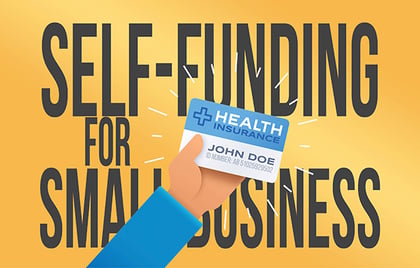 The popularity of self-funded group healthcare plans continues to rise. Already immensely popular with large employers, small businesses continue to embrace self-funding as a remarkably effective way to manage costs, navigate changing regulations, and expand medical plan options.
The popularity of self-funded group healthcare plans continues to rise. Already immensely popular with large employers, small businesses continue to embrace self-funding as a remarkably effective way to manage costs, navigate changing regulations, and expand medical plan options.
The genesis of self-funding’s popularity amongst smaller employers can be traced back to the Affordable Care Act. When the ACA was enacted back in March of 2010, its requirements prompted many small to mid-size companies to re-examine how they were offering - and funding - employee benefits.
Self-funding used to be considered an alternative funding method that was ONLY feasible for large companies who could take on greater risks and handle cash flow fluctuations in exchange for upside savings potential. Self-funding, after all, is a mechanism by which companies are essentially insuring themselves.
With the advent of the ACA, the benefits of self-funding expanded beyond just those of potential financial upside. The benefits of the transition are now far more reaching, and now benefit employers and employees alike.
Because of this, small and mid-size employers have been taking the plunge into self-funded group medical plans in large numbers. And as the industry has continued to evolve, self-funding among small groups has become quite common.
Here’s why:
Greater Risk and Greater Reward
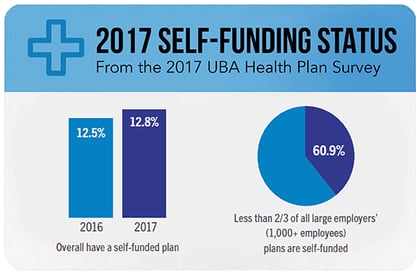 In a self-funded plan, the employer - not the insurance carrier - assumes the risk and cost fluctuations associated with its healthcare plan. Plan costs can fluctuate by month (or even by week), depending on the medical claims submitted by the company’s employees.
In a self-funded plan, the employer - not the insurance carrier - assumes the risk and cost fluctuations associated with its healthcare plan. Plan costs can fluctuate by month (or even by week), depending on the medical claims submitted by the company’s employees.
The upside for self-funded employers is that they can save money in good plan years. Rather than pre-paying a flat rate medical premium to an insurance carrier in a fully funded scenario (regardless of actual claims and plan utilization), a self-funded employer retains the claim reserves traditionally held by insurance companies, and thereby also retains the interest on those reserves.
In other words, if the premiums retained through employee contributions (assuming they share, as most employees do, in the premium expense), plus the premiums that would have otherwise been paid to the carrier in a fully funded scenario, exceed claim expenses, then the employer comes out ahead.
Protecting the Downside
That being said, it is possible for self-insured employers to spend more money than a fully funded company on medical coverage in years when their employees suffer major illnesses. It’s because of this that self-funded companies should budget for max-liability scenarios, which should be carefully modeled-out and forecasted by a licensed benefits advisor.
This does not mean, however, that a self-insured employer leaves themselves vulnerable to a catastrophic expense which could decimate their business. This is probably the most common misperception about self-funding.
The risk of catastrophic downside can be neutralized through stop-loss insurance, which is designed to insulate self-funded companies from runaway healthcare claims. Stop-loss insurance reimburses self-funded companies for claims exceeding predetermined levels, either on an individual claim or aggregated claim level. (More on stop-loss coverage later.)
So long as self-funded companies practice good financial discipline and look at self-funding over a longer time horizon than year-to-year, most companies find it advantageous to self-insure. But these employers should make sure to work with an employee benefits broker with a talented underwriting department.
Brokers can help employers forecast claims and insurance costs for the next year, allowing for better cash flow and benefit planning. Most importantly, self-funded companies should always budget for max liability and set aside reserves from well performing plan years to offset what is sure to be a “poor” plan year every now and then.
By contrast, a fully insured (or traditional group) plan relies on the insurance carrier to assume the risk and plan administration. With a fully insured plan, an employer’s premium rate is fixed for an entire year according to enrollee count each month; monthly premium changes only if enrollee count changes.
While a fully insured structure allows for more predictable health plan expenditures, in the form of monthly premium, it also removes any financial upside an employer might accrue in a good plan year. Furthermore, it does not protect an employer from year-over-year increases in medical premium, which are sure to follow if the employer’s medical claims for the year exceed what the carrier had projected.
As you can probably imagine, self-funded plans work particularly well with companies who have a younger, healthier workforce, especially since fully insured community-rated plans under the ACA don’t give small employers any credit for a healthy population. That said, even employers with less than stellar workforce population health metrics should take a look at self-funding.
Self-Funding Means Greater Plan Design Flexibility
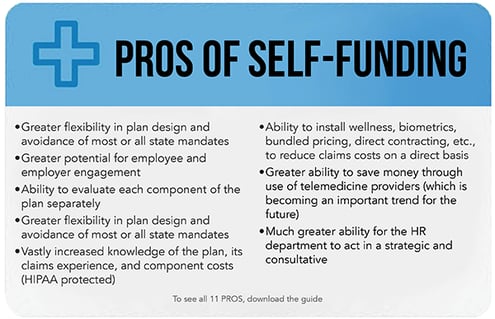 In addition to cost savings, self-funding offers more control over the dynamics of plan design. With fully insured plans, plans and standard benefit options are filed by each insurance company with every applicable regulatory body, and typically offer limited flexibility.
In addition to cost savings, self-funding offers more control over the dynamics of plan design. With fully insured plans, plans and standard benefit options are filed by each insurance company with every applicable regulatory body, and typically offer limited flexibility.
But with self-funded plans, an employer has significantly more flexibility in plan design, often only limited by the capabilities of their third-party administrator (TPA). In addition to adjusting more typical plan design features such as copays and deductible, employers may be able to select location-specific networks, utilize high performing networks driven by plan design, select a specific PBM (pharmacy benefit manager), customize their prescription drug formulary, and incorporate wellness programs aligned with the underlying plan design.
Self-funding also allows employers the freedom to unbundle services, which often drive costs. These include, but aren’t limited to stop loss, pharmacy benefit management, reserve building, case management, and claims processing. Unbundling brings about far more transparency of costs, which otherwise can get buried in the underlying cost of these components.
Self-Funding Means Less Burdensome Compliance
For employers who are looking to avoid the added cost and compliance burdens brought about through health care reform, self-funding can be an effective antidote to the mandates and fees associated with the ACA. Self-funding is also known as reinsurance.
One example of costly regulation that self-funding avoids comes in the form of “community ratings”. Beginning in 2014, the ACA required fully insured plans with fewer than 50 lives to adhere to “community rating” rules, which meant that the cost of insurance would not be based on health factors. In fact, rates could only vary by age, tobacco use, self only or family coverage, and region. Beginning in 2016, the community rating rules were adjusted to allow states to apply the community ratings, should they so choose, to fully insured plans up to 100 lives. Self-funded companies are allowed to steer clear of community ratings altogether.
Another example of a regulation self-funding avoids involves “essential health benefits”, which the ACA identifies as 10 benefit categories that must be included as essential health benefits in small group, fully funded medical plans. Essential health benefits limit flexibility and drive up costs. Self-insured plans (along with coverage offered in the large-group market and through grandfathered plans), are not required to cover these essential health benefits. It should be noted however, that these self-funded plans must still meet the ACA's requirements to provide "affordable" coverage that offers at least "minimum value."
Finally, self-funding provides tax relief, as some states don’t tax premiums on self-funded plans. Additionally, self-insured plans are exempt from the ACA’s medical insurance premium excise tax.
Stop Loss Insurance Makes Self-Funding Far Less Risky
By its very definition, a self-funded plan takes on risks. Only very large employers assume all of the risk associated with self-funding - the majority purchase some form of stop loss insurance (commonly referred to as reinsurance).
Stop loss insurance can be purchased in two forms; individual stop loss (also known as specific stop loss) and aggregate stop loss (also known as total claims coverage). It is very important that an employer purchase the appropriate level of individual and aggregate stop loss and even more important that they purchase this from a quality vendor. Working with a knowledgeable broker to identify and strike disadvantageous terms and conditions from a contract is always a good idea.
Evaluating the quality of a stop loss contract is perhaps the most important task a benefits advisor can provide to a self-funded company. A good advisor will deploy risk management techniques to compare the premium for the stop loss coverage to the level of risk their client is willing to assume. Matching these risk corridors with the terms of the contract will ensure that the plan matches the strategy.
Wellness Takes On More Importance with Self-Funding
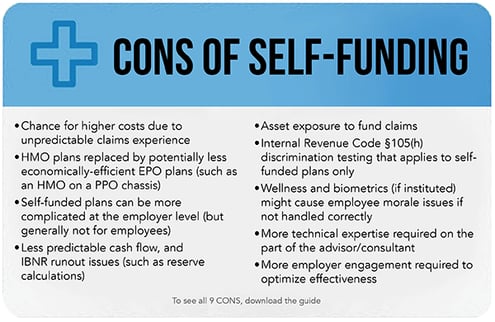 Because self-funded companies are essentially insuring themselves, and because lower claims expenses directly benefit the bottom line, wellness programs are extremely important in making a self-funded program more successful.
Because self-funded companies are essentially insuring themselves, and because lower claims expenses directly benefit the bottom line, wellness programs are extremely important in making a self-funded program more successful.
It’s important to note that wellness programs should be customized to address the short- and long-term goals of a self-funded employer. For example, it’s quite possible that a wellness program could add costs in the short term, especially if it’s effective in promoting the utilization of more preventative care services than in the past (and the subsequent expense that goes along with this).
After all, preventative care, including adherence to age-appropriate screenings and immunizations, is often the best defense against the onset of chronic conditions and otherwise undetected illnesses that can lead to exorbitant medical claims. In a best-case scenario, a well-developed wellness program can actually help individuals maintain or lower clinical risk factors and help avoid associated medical claims.
Population health analytical tools should also be deployed, when possible. In smaller companies, this is typically only possible if the firm is self-funded. (Rarely will carriers share claim data with companies with less than 100 covered lives in a fully funded environment.)
For self-funded companies large and small, solutions exist which help employers to identify and target the “ticking time bombs” within their organizations. These may include individuals who have undiagnosed conditions, as well as those who have been diagnosed with chronic conditions but are care or medication non-adherent.
Take, for example, a cohort of individuals who have been flagged through biometric screenings with hypertension. When married with medical usage data which illustrates that some of these individuals aren’t seeking treatment, either from ignorance or lack of follow-thru, employers and care providers can develop a (HIPPA compliant) plan of action to improve the situation. In doing so, they can head off a condition which could otherwise lead to heart attacks, strokes, coronary heart disease, heart failure, kidney failure and more. In other words, precisely the catastrophic health claims you want to avoid whether you are self-funded or not.
Let Your Employees Know About the Transition to Self-Funding
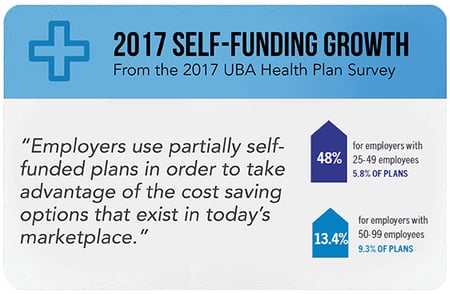 Once employers make the switch to self-funding, it’s generally a good idea for them to inform their employees. Once the workforce understands that their behaviors, as they relate to being responsible consumers of healthcare, can favorably or unfavorably impact the bottom line (e.g. more money for salaries, bonuses, additional staff), employers will start to notice a change.
Once employers make the switch to self-funding, it’s generally a good idea for them to inform their employees. Once the workforce understands that their behaviors, as they relate to being responsible consumers of healthcare, can favorably or unfavorably impact the bottom line (e.g. more money for salaries, bonuses, additional staff), employers will start to notice a change.
It’s not unlike the care one takes in renting a car vs. borrowing one from a friend, or the way people choose items at an a la carte vs. all-you-can-eat buffet. A shift in mindset will set-in once employers educate their workforces on how to become better consumers of healthcare and better stewards of their personal health.
Note that this is not to suggest that employers should attempt to suppress healthcare consumption. Quite the contrary. Rather, it’s merely to suggest that the gap in consumer-directed health information is quite large – and taking the time to educate a workforce on how to comparison shop on price and quality for medications and medical procedures, just as one example, can go a long way to impacting medical cost. So too can making an investment in best-in-class communication and decision-support tools, as well as incentives for the adoption of telemedicine, preventative care, and other valued healthcare behaviors.
Finally, when communicating the transition to self-funding, employers should position the change as something that is being done FOR everyone at company, rather than TO everyone at the company. Demonstrating this through a new incentive or benefit (even one that is completely voluntary) can go a long way in cementing this idea in the company culture.
Once employees are engaged and on board, small businesses are poised to make a smooth transition to a funding strategy that will allow them to create a flexible and cost-effective healthcare plan.
Learn More
While this blog post touches on several important aspect of self-funding, we encourage employers who want to know more to download our latest white paper on the subject. This white paper traces the market evolution into self-funding, while providing employers who might be considering a self-funding option with more information about the potential benefits and challenges.
Along with easy-to-digest graphs and charts, we cover why self-funding keeps employers nimble, how to minimize risk, ways to incorporate wellness programs and engage employees, and more.
Work With Us
The JP Griffin Group is a nationwide group employee benefits consulting firm that specializes in the design, implementation, and management of complex multi-site, multi-state employee benefit programs. We work with both fully insured and self-funded companies to deliver innovative, impactful and tailored benefit solutions through fact-based strategic planning, insightful and actionable analytics, leading-edge automation solutions and award-winning communication materials.
We measure our success by our ability to ease our clients HR administrative and financial burdens, while at the same time delivering truly competitive employee benefits packages that assist our clients in employee recruitment and retention.
We work with a diverse set of clients, which span 47 states as well as the District of Columbia. Our clients range in size from 25 to 4,000+ employees. The majority of our clients are geographically dispersed with varied compensation tiers, diverse demographics, multicultural talent pools, bilingual language requirements, and unique funding arrangements.
If you would like to discuss a holistic benefits solution designed to address your overall business objectives, as well as the unique needs of your workforce and your marketplace, please contact us.
Our extensive work in the self-funded arena gives us unique insights into many of the common challenges and opportunities facing employers today. We'll ensure that your benefits package aligns with board policies and meets budgetary constraints, while creating a competitive edge within the local workforce.
The ability of a firm like the JP Griffin Group to gather comparative data, analyze an organization, understand where it fits within its sector, and make objective recommendations—is priceless to HR and Finance departments. Having an external, professional recommendation is often received positively by both boards and staff.















